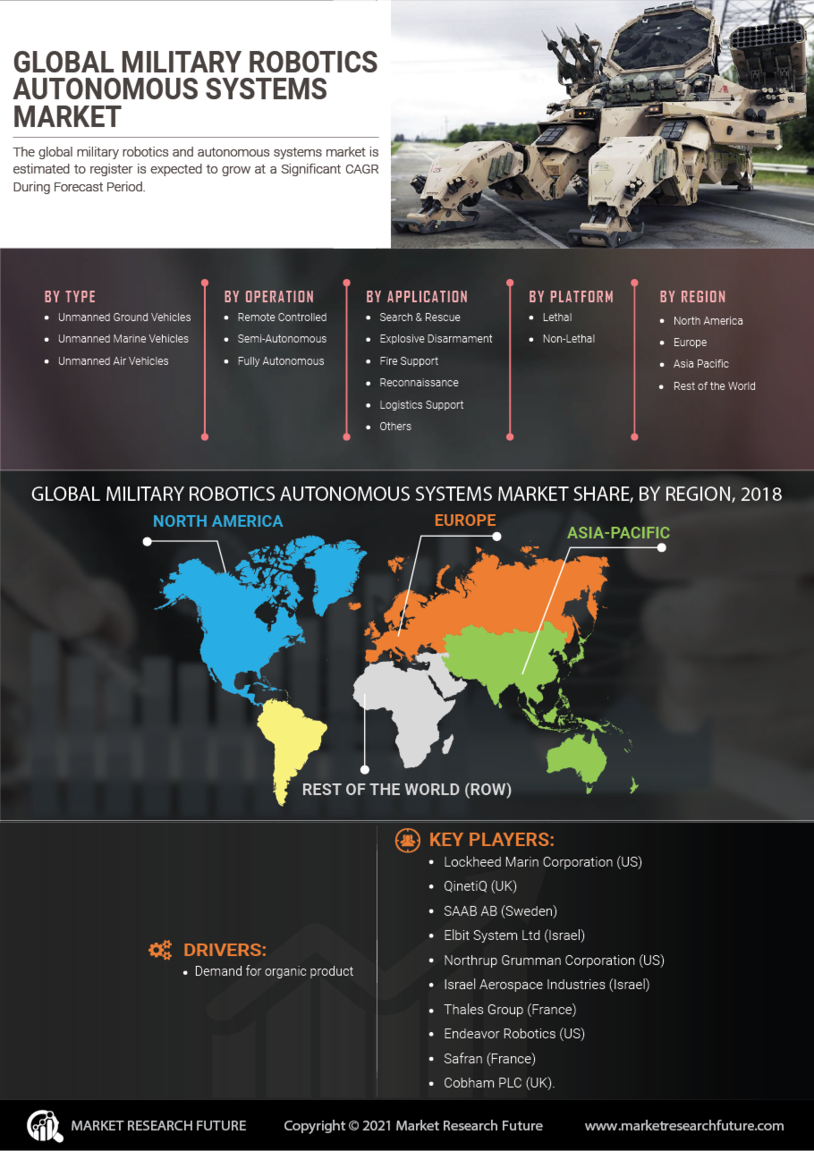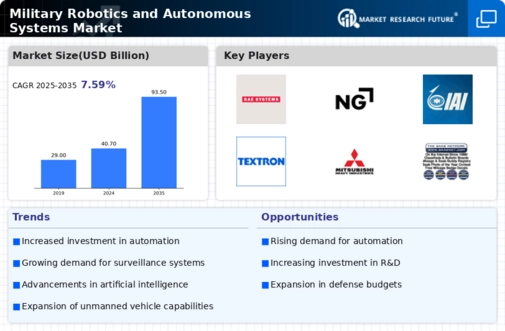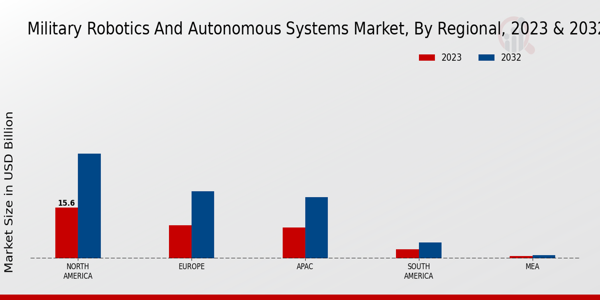Geopolitical Tensions
Geopolitical tensions and conflicts around the world significantly influence the Global Military Robotics and Autonomous Systems Market Industry. Heightened security concerns prompt nations to invest in advanced military technologies to maintain strategic advantages. For example, ongoing territorial disputes in regions such as the South China Sea and Eastern Europe have led to increased military readiness and modernization efforts. This environment fosters demand for robotics and autonomous systems, as they provide enhanced capabilities for surveillance, reconnaissance, and combat operations. Consequently, the market is expected to witness substantial growth, driven by the urgent need for nations to bolster their defense mechanisms.
Increased Defense Budgets
The Global Military Robotics and Autonomous Systems Market Industry experiences a notable boost due to rising defense budgets across various nations. Countries are increasingly allocating substantial financial resources to enhance their military capabilities, with global defense spending projected to reach approximately 2 trillion USD in 2024. This trend is particularly evident in nations such as the United States, China, and India, which are investing heavily in advanced technologies. As a result, the market is expected to grow significantly, with estimates suggesting a market value of 40.7 USD Billion in 2024, driven by the demand for innovative robotic systems and autonomous solutions.
Market Growth Projections
Technological Advancements
Rapid technological advancements play a crucial role in shaping the Global Military Robotics and Autonomous Systems Market Industry. Innovations in artificial intelligence, machine learning, and sensor technologies are enabling the development of sophisticated military robots and autonomous systems. These advancements enhance operational efficiency and effectiveness, allowing for improved decision-making and situational awareness on the battlefield. For instance, the integration of AI in unmanned aerial vehicles (UAVs) has revolutionized reconnaissance and surveillance missions. As these technologies continue to evolve, the market is projected to expand, potentially reaching 93.5 USD Billion by 2035, reflecting a compound annual growth rate of 7.85% from 2025 to 2035.
Focus on Force Multiplication
The Global Military Robotics and Autonomous Systems Market Industry is increasingly characterized by a focus on force multiplication. Military organizations are recognizing the potential of robotics and autonomous systems to enhance operational capabilities without proportionately increasing personnel costs. By deploying unmanned systems for reconnaissance, logistics, and combat support, armed forces can achieve greater efficiency and effectiveness. This strategic shift is evident in various military exercises and operations, where autonomous systems are integrated into traditional forces. As a result, the market is poised for growth, as militaries worldwide seek to leverage these technologies to optimize their operational frameworks.
Emerging Markets and Partnerships
Emerging markets and international partnerships are shaping the landscape of the Global Military Robotics and Autonomous Systems Market Industry. Countries in regions such as Asia-Pacific and the Middle East are increasingly investing in military modernization, creating opportunities for collaboration and technology transfer. Partnerships between established defense contractors and emerging economies facilitate the development of localized military solutions tailored to specific regional needs. This trend not only enhances the capabilities of emerging markets but also contributes to the overall growth of the market. As these collaborations expand, the industry is likely to witness increased innovation and diversification in military robotics and autonomous systems.













